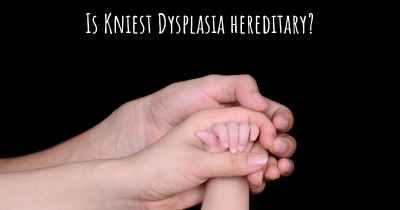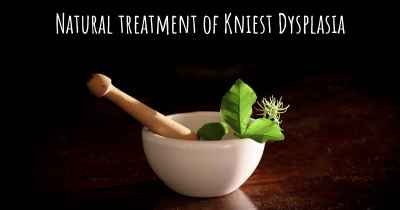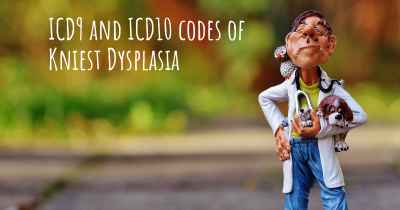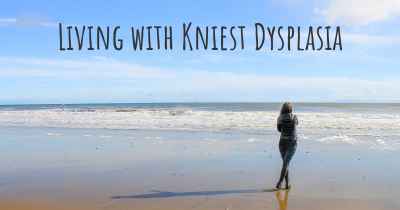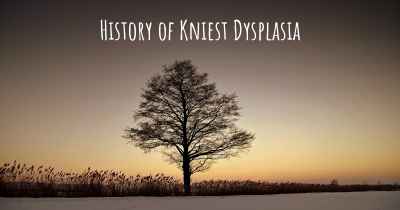What is the life expectancy of someone with Kniest Dysplasia?
Life expectancy of people with Kniest Dysplasia and recent progresses and researches in Kniest Dysplasia
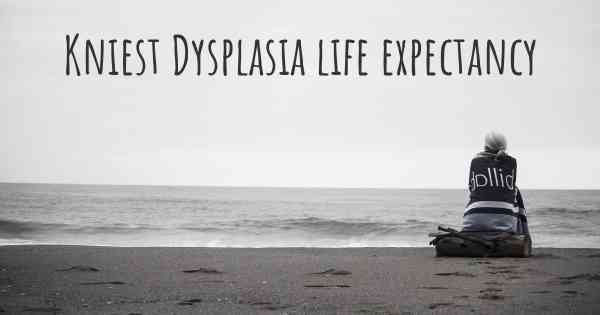
Kniest Dysplasia is a rare genetic disorder that affects bone and cartilage development. It is characterized by short stature, joint deformities, and other skeletal abnormalities. The life expectancy of individuals with Kniest Dysplasia can vary depending on the severity of symptoms and associated complications. While there is limited data available, it is generally believed that most individuals with Kniest Dysplasia have a normal lifespan. However, some severe cases may experience respiratory or neurological complications that can impact life expectancy. It is important for individuals with Kniest Dysplasia to receive appropriate medical care and management of associated health issues to optimize their quality of life.
Kniest Dysplasia:
Kniest Dysplasia is a rare genetic disorder that affects the development of bone and cartilage. It falls under the category of skeletal dysplasias, which are a group of conditions characterized by abnormal growth and formation of the skeleton. Kniest Dysplasia specifically affects the long bones, spine, and joints, leading to various physical and developmental challenges.
Clinical Features:
The severity of Kniest Dysplasia can vary from person to person, but there are some common clinical features associated with this condition. Individuals with Kniest Dysplasia typically have short stature, with disproportionately short arms and legs. They may also have a barrel-shaped chest, a flattened midface, and a cleft palate. Joint problems, such as stiffness and limited range of motion, are also common. Additionally, individuals with Kniest Dysplasia may experience hearing loss and vision problems.
Life Expectancy:
When it comes to discussing the life expectancy of individuals with Kniest Dysplasia, it is important to note that this can vary significantly depending on the severity of the condition and the presence of associated complications. As a rare disorder, there is limited data available on long-term outcomes and life expectancy specifically for Kniest Dysplasia.
However, it is crucial to approach this topic with sensitivity, as discussing life expectancy can be a sensitive and personal matter for individuals and families affected by this condition. It is always recommended to consult with healthcare professionals who specialize in skeletal dysplasias and have a comprehensive understanding of the individual's specific medical history and current health status.
Medical Management and Support:
While there is no cure for Kniest Dysplasia, medical management and supportive care play a crucial role in improving the quality of life for individuals with this condition. Regular monitoring by a multidisciplinary team of healthcare professionals, including orthopedic specialists, geneticists, and physical therapists, is essential to address the various challenges associated with Kniest Dysplasia.
Treatment options may include physical therapy to improve mobility and joint function, orthopedic interventions to address skeletal abnormalities, and assistive devices to enhance independence and mobility. Additionally, early intervention programs can help optimize developmental outcomes and provide support for speech and language difficulties.
Emotional and Social Support:
Living with a rare genetic disorder like Kniest Dysplasia can present unique emotional and social challenges. It is important for individuals and families affected by this condition to seek emotional support and connect with support groups or organizations specializing in skeletal dysplasias. These resources can provide valuable information, guidance, and a sense of community.
Conclusion:
While it is difficult to provide a specific life expectancy range for individuals with Kniest Dysplasia due to the limited data available, it is important to focus on providing comprehensive medical management, supportive care, and emotional support to enhance the overall well-being and quality of life for those affected by this condition. Each individual's journey with Kniest Dysplasia is unique, and it is crucial to approach their care with empathy, understanding, and a multidisciplinary approach.
Posted Oct 31, 2018 by Shere 2500

